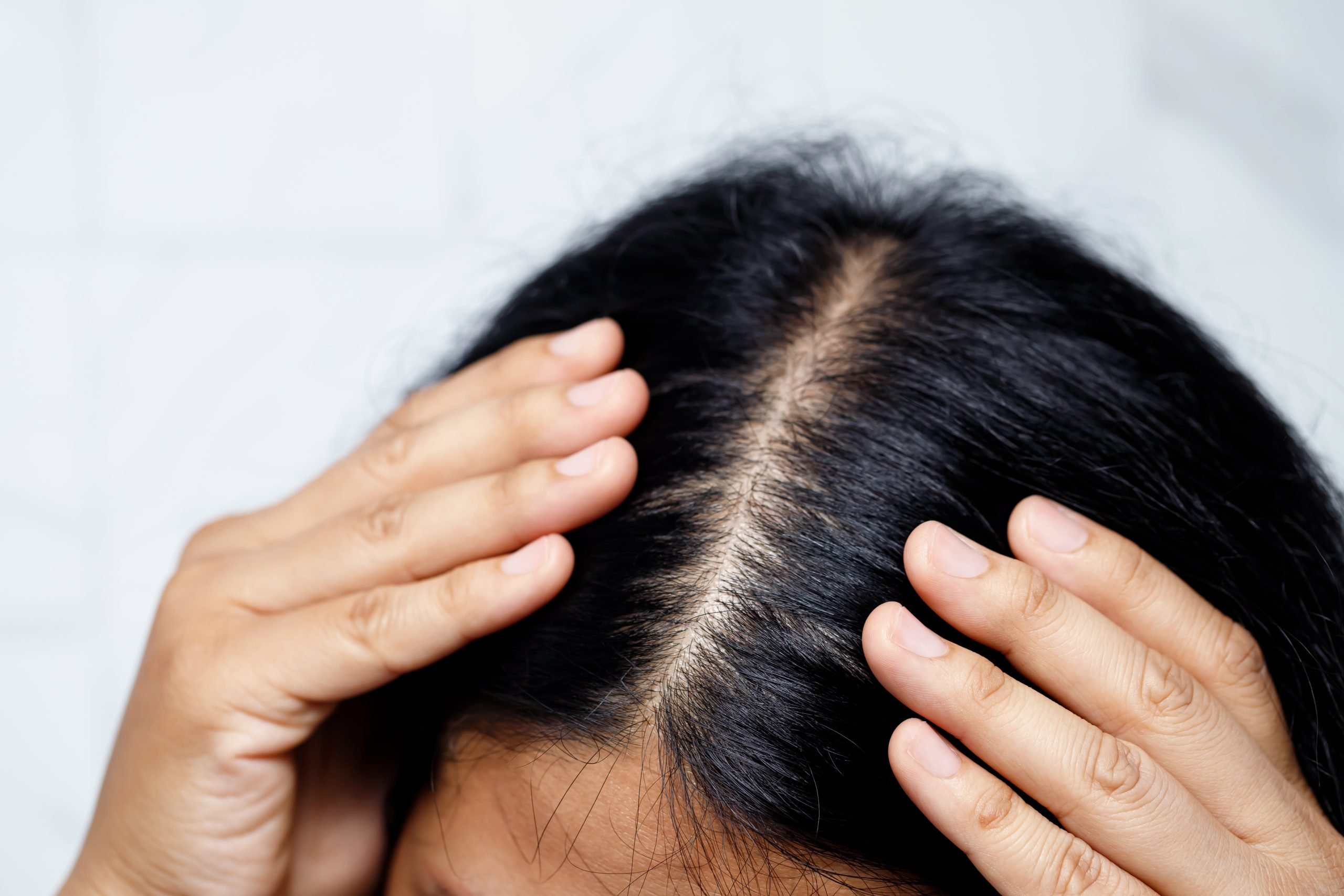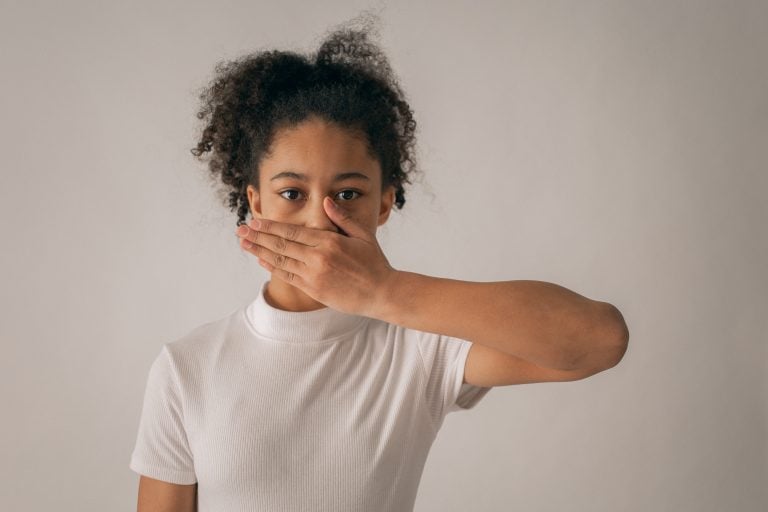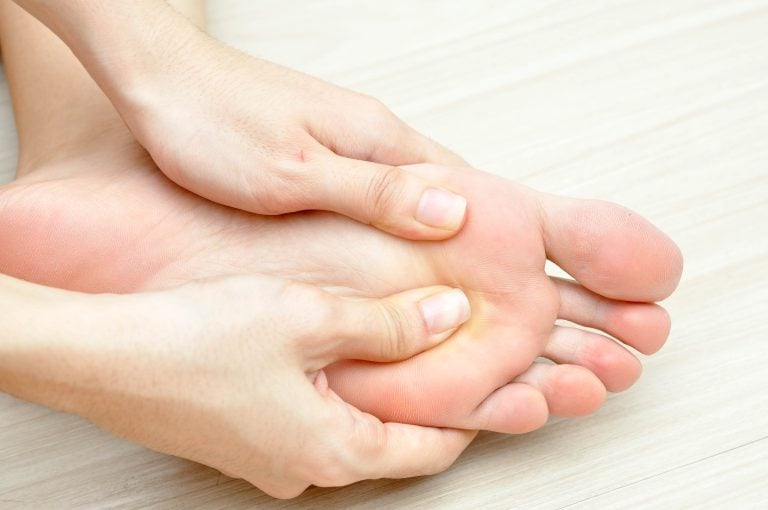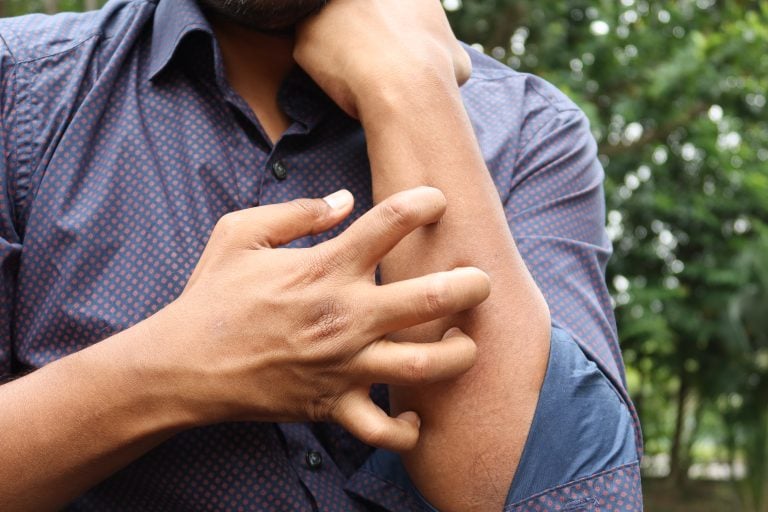Head lice (Pediculus humanus capitis) are small parasitic insects that infest the scalp, hair, and occasionally the eyebrows and eyelashes. Adult lice are about the size of a sesame seed; young lice are usually no bigger than the head of a pin. Nits (lice eggs) are so small that they’re often mistaken for dandruff or dry skin.
Lice are easily spread by head-to-head contact. They feed on blood and reproduce quickly.
Infestations are most common among children, particularly girls between 3 and 11.1Van der Wouden JC, Klootwijk T, Le Cleach L, et al. Interventions for treating head lice. Cochrane Database Syst Rev. 2018;2018(5):CD009321. https://pmc.ncbi.nlm.nih.gov/articles/PMC6494540 However, it’s possible to contract lice at any age.
Symptoms of head lice
Many people who have lice aren’t aware of the problem. Notable symptoms usually result from an allergic reaction to louse bites.2About Head Lice. Centers for Disease Control and Prevention. Published June 4, 2024. Accessed July 9, 2025. https://www.cdc.gov/lice/about/head-lice.html
There are five common signs:
- Itching (pruritus)
- Tickling sensation
- Sores on the head (as a result of scratching)
- Irritability
- Trouble sleeping
Because cases can be asymptomatic or mild at first, it’s a good idea to check the scalp for lice if you or your child has come in contact with an affected person.
Detecting head lice and their eggs
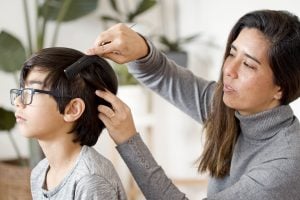
Use a flea or lice comb to inspect the head and scalp. Lice can often be seen crawling on the scalp and hair, while harder-to-spot eggs are found near hair shafts, the back of the neck, or behind the ears.2About Head Lice. Centers for Disease Control and Prevention. Published June 4, 2024. Accessed July 9, 2025. https://www.cdc.gov/lice/about/head-lice.html If you think your child has lice but can’t see bugs or nits, good lighting and a magnifying lens can help increase detection.
Do you need to treat lice?
Although head lice do not transmit diseases in North America, and infestations are not considered health hazards,2About Head Lice. Centers for Disease Control and Prevention. Published June 4, 2024. Accessed July 9, 2025. https://www.cdc.gov/lice/about/head-lice.html prompt treatment will reduce discomfort and help prevent passing lice to someone else. Aggressive scratching can break the skin, possibly leading to a bacterial infection called pyoderma.1Van der Wouden JC, Klootwijk T, Le Cleach L, et al. Interventions for treating head lice. Cochrane Database Syst Rev. 2018;2018(5):CD009321. https://pmc.ncbi.nlm.nih.gov/articles/PMC6494540
Conventional treatments
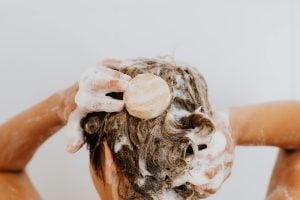
FDA–approved topical pediculicides are insecticides that kill lice. Products include lotions, creams, and shampoos.
While effective, these medicines can be costly, especially when treating multiple household members. Additionally, some applications are not approved for young children, and drug resistance is possible with frequent use.1Van der Wouden JC, Klootwijk T, Le Cleach L, et al. Interventions for treating head lice. Cochrane Database Syst Rev. 2018;2018(5):CD009321. https://pmc.ncbi.nlm.nih.gov/articles/PMC6494540 Over-the-counter creams containing permethrin (Nix) or pyrethrins (RID) and prescriptions with benzyl alcohol, ivermectin, malathion, or spinosad may have side effects.3Clinical Care of Head Lice. Centers for Disease Control and Prevention. Published January 31, 2025. Accessed July 9, 2025. https://www.cdc.gov/lice/hcp/clinical-care/index.html Because of safety concerns, the American Academy of Pediatrics recommends against lindane, an organochloride used for lice and scabies infections.4Nolt D, Moore S, Yan AC, Melnick L; Committee on Infectious Diseases, Committee on Practice and Ambulatory Medicine, Section on Dermatology. Head lice. Pediatrics. 2022;150(4):E2022059282. https://doi.org/10.1542/peds.2022-059282
Skin and eye irritation can occur with pediculicides. Avoid washing hair in hot water or using shampoo for 24 to 48 hours after treatment. If possible, rinse hair in warm water over a sink to minimize skin contact.
To completely destroy lice and any newly hatched eggs, most treatments require a second course one to two weeks later.3Clinical Care of Head Lice. Centers for Disease Control and Prevention. Published January 31, 2025. Accessed July 9, 2025. https://www.cdc.gov/lice/hcp/clinical-care/index.html,4Nolt D, Moore S, Yan AC, Melnick L; Committee on Infectious Diseases, Committee on Practice and Ambulatory Medicine, Section on Dermatology. Head lice. Pediatrics. 2022;150(4):E2022059282. https://doi.org/10.1542/peds.2022-059282 Following instructions from your doctor will help ensure complete elimination.
Wet combing
Wet combing uses a fine-toothed comb to manually find and remove lice and nits from wet, conditioned hair. Research suggests that wet combing is an effective treatment4Nolt D, Moore S, Yan AC, Melnick L; Committee on Infectious Diseases, Committee on Practice and Ambulatory Medicine, Section on Dermatology. Head lice. Pediatrics. 2022;150(4):E2022059282. https://doi.org/10.1542/peds.2022-059282; however, it can be time consuming and must be repeated every three to four days for at least three weeks.
Essential oils (occlusives)
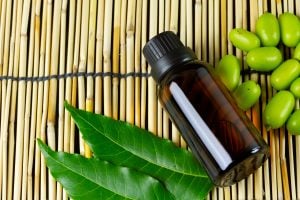
A 2020 meta-analysis of 17 clinical trials found topical occlusives like olive oil, tea tree oil, and anise oil as effective as pediculicides, with less skin and eye irritation.5Flores-Genuino RNS, Gnilo CMS, Dofitas BL. Occlusive versus neurotoxic agents for topical treatment of head lice infestation: A systematic review and meta-analysis. Pediatr Dermatol. 2020;37(1):86-92. https://doi.org/10.1111/pde.14016 To suffocate and eliminate lice, occlusives are applied to the entire head every seven days for at least three weeks.4Nolt D, Moore S, Yan AC, Melnick L; Committee on Infectious Diseases, Committee on Practice and Ambulatory Medicine, Section on Dermatology. Head lice. Pediatrics. 2022;150(4):E2022059282. https://doi.org/10.1542/peds.2022-059282
These occlusives can be used safely at home:
- Anise oil, ylang–ylang, and coconut oil1Van der Wouden JC, Klootwijk T, Le Cleach L, et al. Interventions for treating head lice. Cochrane Database Syst Rev. 2018;2018(5):CD009321. https://pmc.ncbi.nlm.nih.gov/articles/PMC6494540
- Eucalyptus oil1Van der Wouden JC, Klootwijk T, Le Cleach L, et al. Interventions for treating head lice. Cochrane Database Syst Rev. 2018;2018(5):CD009321. https://pmc.ncbi.nlm.nih.gov/articles/PMC6494540,6Barker SC, Altman PM. A randomised, assessor blind, parallel group comparative efficacy trial of three products for the treatment of head lice in children—melaleuca oil and lavender oil, pyrethrins and piperonyl butoxide, and a “suffocation” product. BMC Dermatol. 2010;10:6. https://bmcdermatol.biomedcentral.com/articles/10.1186/1471-5945-10-6
- Lavender and tea tree oil1Van der Wouden JC, Klootwijk T, Le Cleach L, et al. Interventions for treating head lice. Cochrane Database Syst Rev. 2018;2018(5):CD009321. https://pmc.ncbi.nlm.nih.gov/articles/PMC6494540,6Barker SC, Altman PM. A randomised, assessor blind, parallel group comparative efficacy trial of three products for the treatment of head lice in children—melaleuca oil and lavender oil, pyrethrins and piperonyl butoxide, and a “suffocation” product. BMC Dermatol. 2010;10:6. https://bmcdermatol.biomedcentral.com/articles/10.1186/1471-5945-10-6
- Grapefruit extract1Van der Wouden JC, Klootwijk T, Le Cleach L, et al. Interventions for treating head lice. Cochrane Database Syst Rev. 2018;2018(5):CD009321. https://pmc.ncbi.nlm.nih.gov/articles/PMC6494540
- Olive oil or petroleum jelly4Nolt D, Moore S, Yan AC, Melnick L; Committee on Infectious Diseases, Committee on Practice and Ambulatory Medicine, Section on Dermatology. Head lice. Pediatrics. 2022;150(4):E2022059282. https://doi.org/10.1542/peds.2022-059282,5Flores-Genuino RNS, Gnilo CMS, Dofitas BL. Occlusive versus neurotoxic agents for topical treatment of head lice infestation: A systematic review and meta-analysis. Pediatr Dermatol. 2020;37(1):86-92. https://doi.org/10.1111/pde.14016,7Mac-Mary S, Messikh R, Jeudy A, et al. Assessment of the efficacy and safety of a new treatment for head lice. ISRN Dermatol. 2012;2012:460467. https://doi.org/10.5402/2012/460467
- Ozonated (ozone-infused) olive oil8Haghighizadeh A, Mortezanejad SAF, Dadpour S, Rajabi O. Evaluation of anti-lice topical lotion of ozonated olive oil and comparison of its effect with permethrin shampoo. Rev Recent Clin Trials. 2022;17(1):58-67. https://doi.org/10.2174/1574887116666211202122132
Occlusive agents may be more effective when the head is covered with a shower cap after application. However, this method may cause a burning sensation, which may be intolerable for children and people with sensitive skin.6Barker SC, Altman PM. A randomised, assessor blind, parallel group comparative efficacy trial of three products for the treatment of head lice in children—melaleuca oil and lavender oil, pyrethrins and piperonyl butoxide, and a “suffocation” product. BMC Dermatol. 2010;10:6. https://bmcdermatol.biomedcentral.com/articles/10.1186/1471-5945-10-6
A small, open-label study looked at andiroba oil with quassia vinegar to reduce or eliminate lice. Findings suggest the combination could be effective when applied every five days for up to two weeks.7Mac-Mary S, Messikh R, Jeudy A, et al. Assessment of the efficacy and safety of a new treatment for head lice. ISRN Dermatol. 2012;2012:460467. https://doi.org/10.5402/2012/460467 More research is needed.
Thymus vulgaris (thyme) and Schinus areira oil may be toxic to lice (without irritating skin), according to a laboratory study. The same research found thyme oil effective in wiping out lice eggs.9Gutiérrez MM, Werdin-González JO, Stefanazzi N, Bras C, Ferrero AA. The potential application of plant essential oils to control Pediculus humanus capitis (Anoplura: Pediculidae). Parasitol Res. 2016;115(2):633-641. https://doi.org/10.1007/s00436-015-4781-8 However, human trials have not yet been conducted.
Shampoos with coconut,10Connolly M, Stafford KA, Coles GC, Kennedy CT, Downs AM. Control of head lice with a coconut-derived emulsion shampoo. J Eur Acad Dermatol Venereol. 2009;23(1):67-69. https://doi.org/10.1111/j.1468-3083.2008.02829.x neem seed extract,11Abdel-Ghaffar F, Semmler M. Efficacy of neem seed extract shampoo on head lice of naturally infected humans in Egypt. Parasitol Res. 2007;100(2):329-332. https://link.springer.com/article/10.1007/s00436-006-0264-2 paw paw, and tea tree oil extracts12McCage CM, Ward SM, Paling CA, Fisher DA, Flynn PJ, McLaughlin JL. Development of a paw paw herbal shampoo for the removal of head lice. Phytomedicine. 2002;9(8):743-748. https://doi.org/10.1078/094471102321621377 have been shown to destroy lice in clinical trials.1Van der Wouden JC, Klootwijk T, Le Cleach L, et al. Interventions for treating head lice. Cochrane Database Syst Rev. 2018;2018(5):CD009321. https://pmc.ncbi.nlm.nih.gov/articles/PMC6494540
Cetaphil
Cetaphil skin cleanser destroyed lice when applied to the head and blow dried. The product must be left on overnight and reapplied every seven days for three weeks.4Nolt D, Moore S, Yan AC, Melnick L; Committee on Infectious Diseases, Committee on Practice and Ambulatory Medicine, Section on Dermatology. Head lice. Pediatrics. 2022;150(4):E2022059282. https://doi.org/10.1542/peds.2022-059282
Cleaning personal items
While it isn’t typically necessary to sanitize the entire house to remove lice, it’s a good idea to soak combs and brushes in hot water for 5 to 10 minutes and vacuum floors and upholstery that may have been exposed.
Machine washing recently used clothing and linens is also important. Dry them on high heat if possible. Items that can’t be washed or dried should be stored in a sealed plastic bag for two weeks.2About Head Lice. Centers for Disease Control and Prevention. Published June 4, 2024. Accessed July 9, 2025. https://www.cdc.gov/lice/about/head-lice.html
Preventing reinfestation
After lice treatment, avoid head-to-head contact to lessen the chances of another outbreak. Don’t share combs, brushes, clothes, hats, or other personal items (such as pillows).
In the 10 weeks after treatment, consistently washing hair with a coconut-derived emulsion shampoo could reduce the likelihood of reinfestation.10Connolly M, Stafford KA, Coles GC, Kennedy CT, Downs AM. Control of head lice with a coconut-derived emulsion shampoo. J Eur Acad Dermatol Venereol. 2009;23(1):67-69. https://doi.org/10.1111/j.1468-3083.2008.02829.x Citronella essential oil may also repel lice and prevent future outbreaks.4Nolt D, Moore S, Yan AC, Melnick L; Committee on Infectious Diseases, Committee on Practice and Ambulatory Medicine, Section on Dermatology. Head lice. Pediatrics. 2022;150(4):E2022059282. https://doi.org/10.1542/peds.2022-059282
Footnotes
- 1Van der Wouden JC, Klootwijk T, Le Cleach L, et al. Interventions for treating head lice. Cochrane Database Syst Rev. 2018;2018(5):CD009321. https://pmc.ncbi.nlm.nih.gov/articles/PMC6494540
- 2About Head Lice. Centers for Disease Control and Prevention. Published June 4, 2024. Accessed July 9, 2025. https://www.cdc.gov/lice/about/head-lice.html
- 3Clinical Care of Head Lice. Centers for Disease Control and Prevention. Published January 31, 2025. Accessed July 9, 2025. https://www.cdc.gov/lice/hcp/clinical-care/index.html
- 4Nolt D, Moore S, Yan AC, Melnick L; Committee on Infectious Diseases, Committee on Practice and Ambulatory Medicine, Section on Dermatology. Head lice. Pediatrics. 2022;150(4):E2022059282. https://doi.org/10.1542/peds.2022-059282
- 5Flores-Genuino RNS, Gnilo CMS, Dofitas BL. Occlusive versus neurotoxic agents for topical treatment of head lice infestation: A systematic review and meta-analysis. Pediatr Dermatol. 2020;37(1):86-92. https://doi.org/10.1111/pde.14016
- 6Barker SC, Altman PM. A randomised, assessor blind, parallel group comparative efficacy trial of three products for the treatment of head lice in children—melaleuca oil and lavender oil, pyrethrins and piperonyl butoxide, and a “suffocation” product. BMC Dermatol. 2010;10:6. https://bmcdermatol.biomedcentral.com/articles/10.1186/1471-5945-10-6
- 7Mac-Mary S, Messikh R, Jeudy A, et al. Assessment of the efficacy and safety of a new treatment for head lice. ISRN Dermatol. 2012;2012:460467. https://doi.org/10.5402/2012/460467
- 8Haghighizadeh A, Mortezanejad SAF, Dadpour S, Rajabi O. Evaluation of anti-lice topical lotion of ozonated olive oil and comparison of its effect with permethrin shampoo. Rev Recent Clin Trials. 2022;17(1):58-67. https://doi.org/10.2174/1574887116666211202122132
- 9Gutiérrez MM, Werdin-González JO, Stefanazzi N, Bras C, Ferrero AA. The potential application of plant essential oils to control Pediculus humanus capitis (Anoplura: Pediculidae). Parasitol Res. 2016;115(2):633-641. https://doi.org/10.1007/s00436-015-4781-8
- 10Connolly M, Stafford KA, Coles GC, Kennedy CT, Downs AM. Control of head lice with a coconut-derived emulsion shampoo. J Eur Acad Dermatol Venereol. 2009;23(1):67-69. https://doi.org/10.1111/j.1468-3083.2008.02829.x
- 11Abdel-Ghaffar F, Semmler M. Efficacy of neem seed extract shampoo on head lice of naturally infected humans in Egypt. Parasitol Res. 2007;100(2):329-332. https://link.springer.com/article/10.1007/s00436-006-0264-2
- 12McCage CM, Ward SM, Paling CA, Fisher DA, Flynn PJ, McLaughlin JL. Development of a paw paw herbal shampoo for the removal of head lice. Phytomedicine. 2002;9(8):743-748. https://doi.org/10.1078/094471102321621377

